Boeing released a video announcing that the B-52 Commercial Engine Replacement Program has completed wind tunnel testing using a model of the B-52 Stratofortress. The clip provides the best look yet at how the aircraft will appear with its new F130 engines. Rolls-Royce won the long-anticipated re-engining deal, which is supposed to help ensure the bombers can keep flying into the 2050s and probably beyond, last year.
In the brief video posted to Boeing’s Twitter account, a 4% scale model of the B-52 could be seen installed inside the company’s transonic wind tunnel where it has been undergoing said testing at a max speed of Mach 0.92. The text that accompanies the tweet explains that the model is similar to those used by engineers in the 1950s and helps collect data for future flight trials. The four engine pods, made up of two nacelles each, will house eight Rolls-Royce F130 engines in total and can be clearly seen in the footage.
The F130 engines will be significantly more fuel efficient and maintenance-friendly than the Pratt & Whitney TF33-PW-103 engines they will be replacing, as Mike Seltman, an aerodynamics engineer at Boeing, reminds us in the video. TF33s have been out of production entirely since 1985 and are projected to no longer be supportable past 2030. While the B-52Hs will require newer and bigger nacelles supplied by Spirit AeroSystems to sufficiently house the higher-bypass turbofans, U.S. Air Force documentation on the re-engining states that new nacelles are an anticipated and acceptable redesign area under the program.
“The goal of the wind tunnel testing is to gather data and build up our error databases and to reduce our risk to ultimately get to flight tests so we can get the airplane in the air for the customer,” said Seltman in the company’s video. “The new engines are larger, so we have bigger nacelles, which brings us closer to the wing and brings up interesting aspects in terms of controllability, which is why we’re doing the wind tunnel test: to make sure we have all of that covered.”
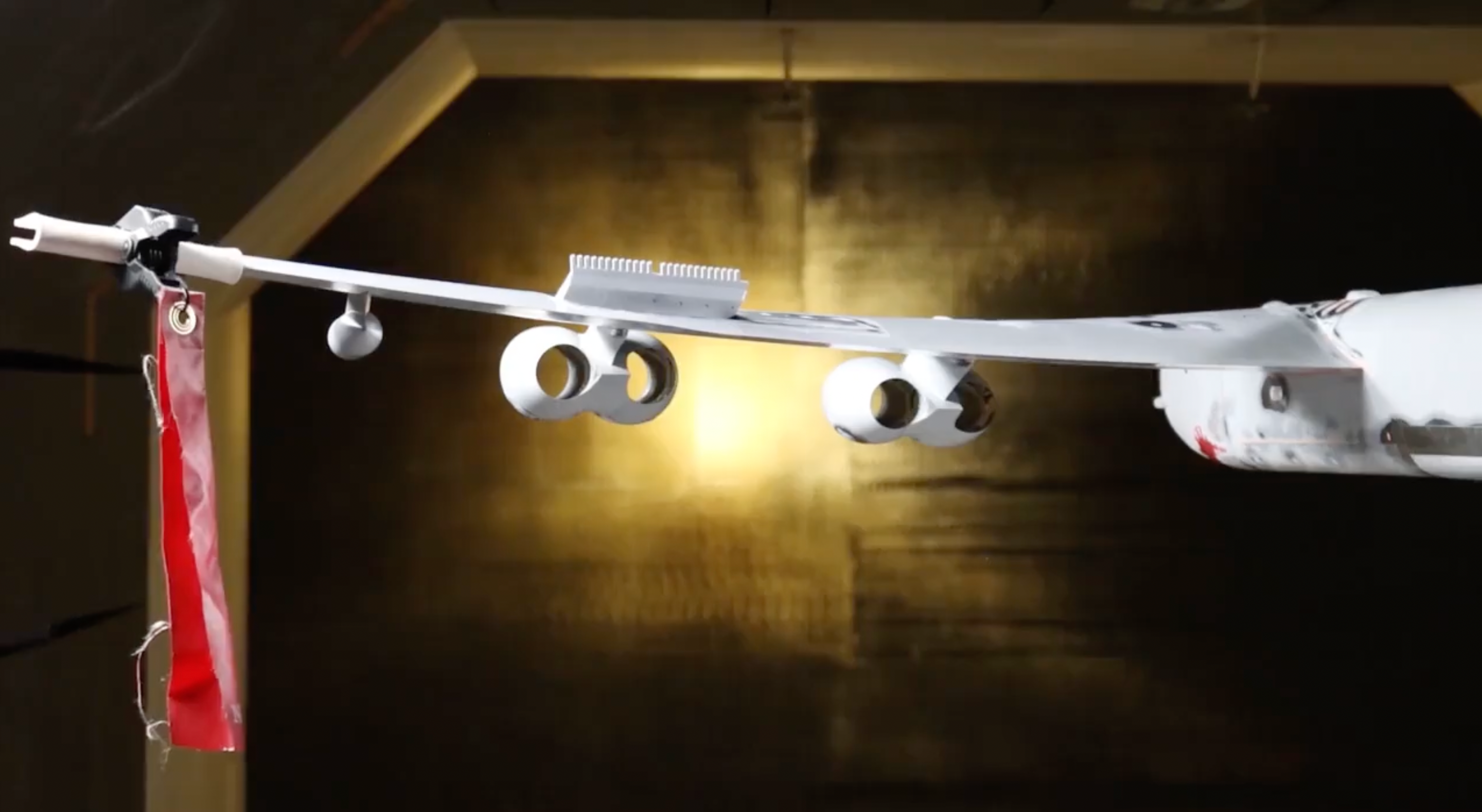
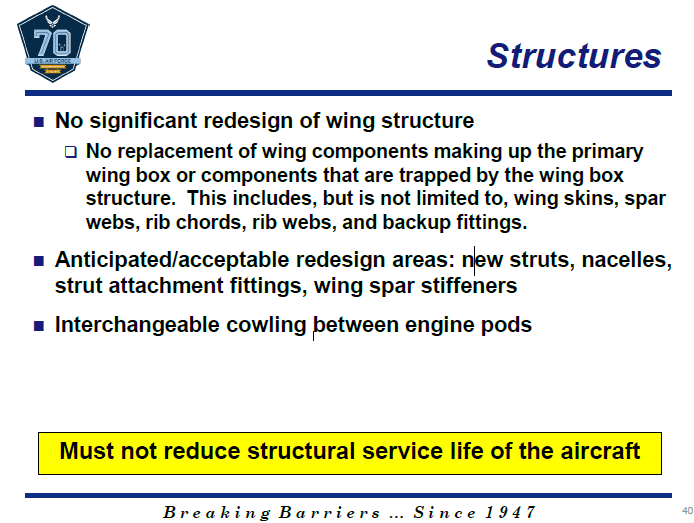
While Pratt & Whitney’s TF33s have certainly helped the B-52 achieve its 68 years of service, they have simply become too expensive to maintain. An Air Force rule requires that the service overhaul each TF33 every 6,000 flight hours, which incurs a cost of $2 million per engine. As of 2019, these factors paired with fuel needs had made it so the B-52 cost $70,000 per hour to fly, cementing the Stratofortress as one of the most expensive aircraft for the Air Force to operate.
Therefore, the Air Force kicked off the competition for the B-52 Commercial Engine Replacement Program in 2018, with Rolls-Royce, Pratt & Whitney, and General Electric Aviation all in the running. After a three-year-long battle, and almost exactly one year ago to the day, Rolls-Royce was awarded the $500.8 million contract (with the potential to reach $2.6 billion if all of its options are exercised). You can read more about the award and the long and meandering road to finally re-engining the ‘BUFF’ in The War Zone’s past coverage, here.
Rolls-Royce will provide Boeing, who designs and builds the B-52, with “608 commercial engines plus spare engines, associated support equipment, and commercial engineering data, to include sustainment activities, to be used on the B-52H bomber fleet,” according to the Pentagon‘s contracting notice released at the time of the award. Rolls-Royce will build the F130 engines at its facility in Indianapolis and Boeing will be responsible for integration.
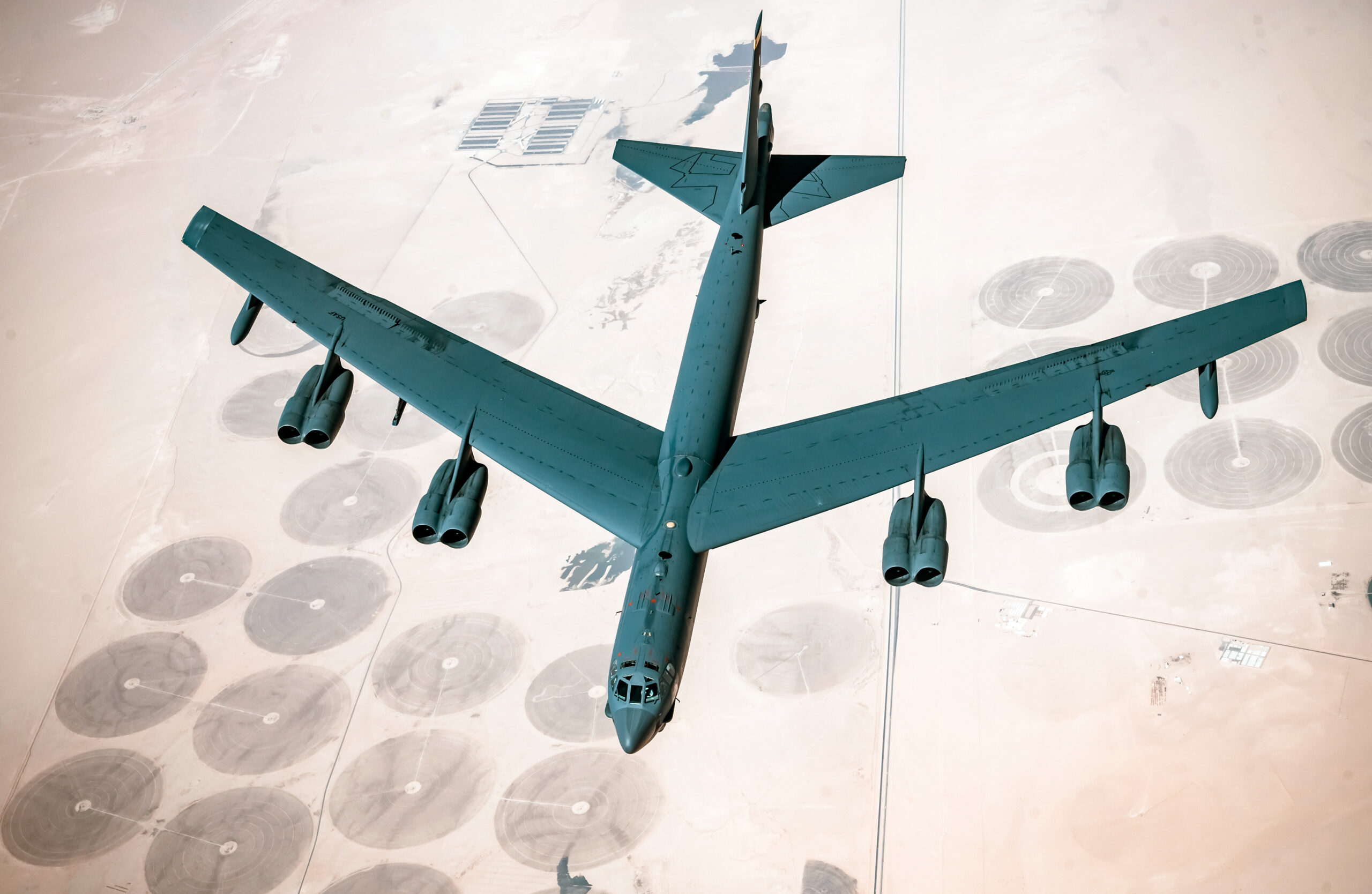
Each of the F130s to be built under the contract will account for a one-for-one replacement of the eight TF33 engines presently aboard each of the Air Force’s 76 B-52Hs, although spares will likely be procured as well. Other than Rolls-Royce’s claims of 30% greater fuel efficiency, increased range, better field performance, enhanced reliability, and reduced tanker aircraft requirements, however, specific performance metrics for the F130 as it will relate to the B-52H have yet to be divulged. But Air Force Magazine did note in March that the new engine will not impact the aircraft’s speed in a negative manner.
Rolls-Royce’s winning F130s are actually military variants of its BR700 engines that currently equip not only the Gulfstream GV/G550/G650 business jet but also the Air Force’s C-37 VIP transport variant of the GV/G550 and E-11 Battlefield Airborne Communications Node (BACN), among other aircraft. Rolls-Royce claims that once installed, the F130 will be able to stay ‘on-wing’ throughout the planned duration of the B-52H’s lifetime, which of course doesn’t pertain to any replacements that would be required or for regular preventative maintenance.
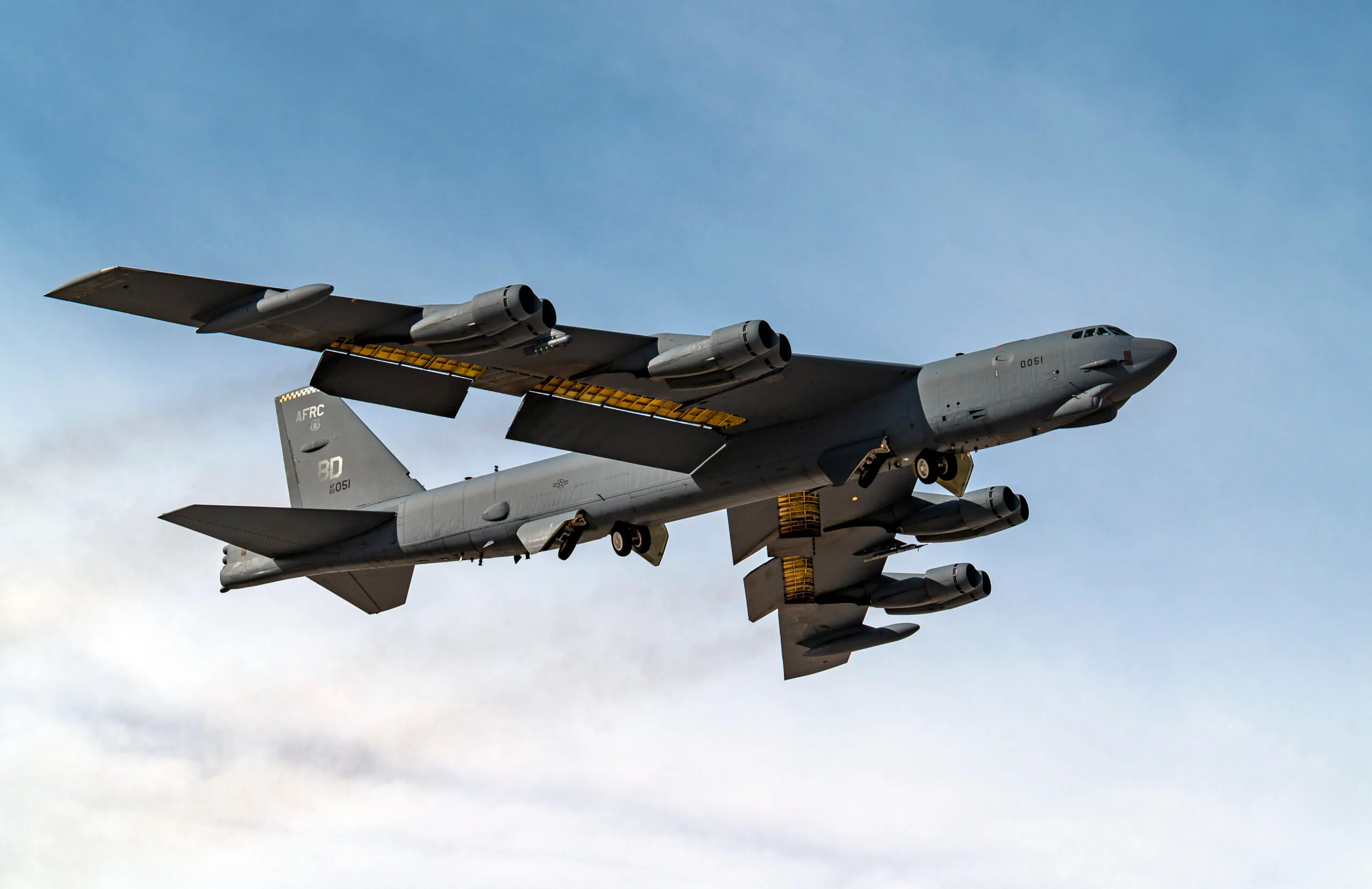
Before the B-52’s Commercial Engine Replacement Program was formally announced, there had been previous proposals over decades to re-engine the B-52 that included commercially derived high-bypass turbofan engine options. Although, the proposals had been passed over in part because of complications with integrating the new larger engines with the B-52’s existing wing design. For moving from eight to four engines, this would have included the need to deal with issues relating to how low the engines would be to the ground and major asymmetric thrust issues for engine-out situations, as well as the need for relocated placement on the wings and new pylons to mount the engines at those locations.

Boeing itself has also been pushing for a re-engining for years now, citing the potential for a replacement to save the billions of dollars that would otherwise be spent on sustainment and fuel. This manifested itself in various ‘creative’ procurement and financing schemes where the engines would ‘pay for themselves’ via savings over long periods of time.
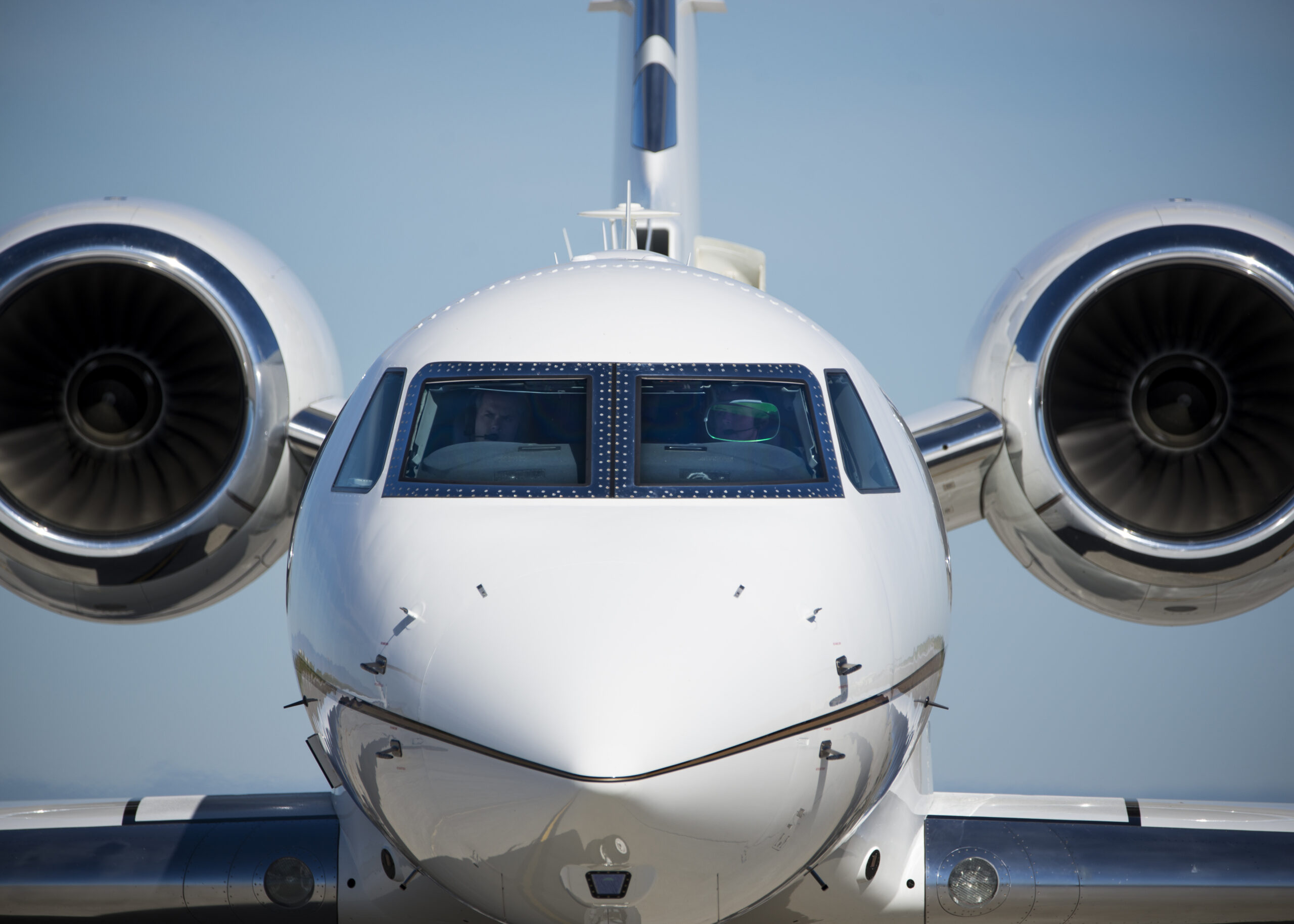
In addition to its new nacelles and engines, the B-52H will be undergoing a variety of upgrades in the near future, which you can read about in detail in this past War Zone feature. One of the most prominent of which is projected to be the new AN/APG-79 active electronically scanned array (AESA) radar intended to bolster the bomber’s situational awareness and targeting capacity, but it could also be used for electronic attacks and long-range communications. This particular AESA is also used on the F/A-18E/F Super Hornet, an entirely different aircraft altogether, which means some modifications will be needed to fit it properly but also so that its array can be scaled up to take full advantage of the BUFF’s big radome.
The Aviationist has reported that the fielding schedule for the APG-79 will overlap with that of the engine replacement program, with the radar’s flight testing aboard the B-52H slated to begin in 2025, and initial operational capability expected in 2027. The article goes on to explain how this could mean that the B-52H will gain two new and separate designations throughout this process, B-52J or B-52K, as bombers modified with only the new radars take flight ahead of getting their new engines and vice versa.

As of March 2022, two test F130 engines had been built and will be evaluated at Rolls-Royce’s outdoor jet engine test facility at NASA’s John C. Stennis Space Center in Mississippi. By the end of 2025, the Air Force expects that the first two B-52Hs will be modified and delivered with their new F130 engines to then undergo ground and flight testing. The first eight re-engined bombers will join a B-52 test force at Edwards Air Force Base, California meant to assess all of the new capabilities that the next-generation B-52s will offer. The Air Force is hoping to complete its integration processes and deliver the first set of modified and operational B-52 aircraft by the end of 2028, and the entire fleet is projected to be re-engined by 2035.
Needless to say, the B-52 will be undergoing quite an evolution over the next few years, one that could potentially keep the bomber flying for an entire century.
Contact the author: Emma@thewarzone.com
